
Browse an alphabetical list of photographs. These historical images portray people, places, and events before, during, and after World War II and the Holocaust.
<< Previous | Displaying results 1101-1150 of 2641 for "Photo" | Next >>
Germans guard prisoners in the Rovno camp for Soviet prisoners of war. Rovno, Poland, after June 22, 1941. Second only to the Jews, Soviet prisoners of war were the largest group of victims of Nazi racial policy.
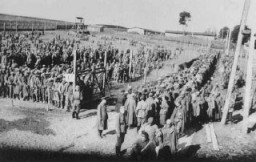
Germans listen to an antisemitic speech by Hitler. Josef Goebbels, minister of propaganda, encouraged every family to acquire a radio. Germany, January 30, 1937.
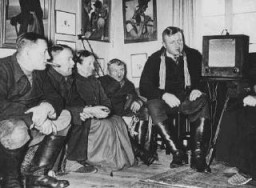
German personnel on Grzybowska Street arrest and search Jewish men who supposedly hid weapons prior to the German occupation of Warsaw. Warsaw, Poland, October-December 1939. This is one of a series of photos taken by Arthur Grimm, an SS propaganda company photographer, documenting the investigative work of the Sicherheitsdienst (SD) in occupied Warsaw for the Berliner Illustrierte Zeitung. Although only some of the photos were published, it is likely that the incidents depicted in the BIZ were staged…
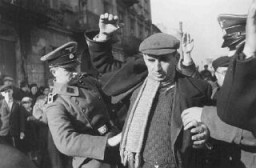
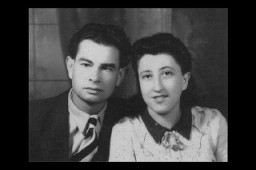
A building in Rome, Italy, used as Gestapo (secret state police) headquarters during the German occupation. This photograph was taken after US forces liberated the city. Rome, Italy, June 1944.
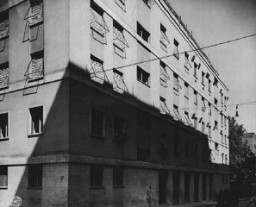
Gilbert and Eleanor Kraus (seated in the center, next to the ship's captain) pose with the 50 Austrian Jewish children they brought to the United States. Photograph taken in June 1939. All the children rescued by the Krauses were from families that had previously tried to escape Nazi territory. After the children arrived in the United States, they were sent to live with foster families until their parents were able to immigrate. However, many were never reunited with their families.
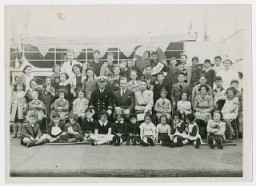
Girls in a sewing class at the Adas Israel school, maintained by the German Jewish community. Berlin, Germany, 1930s.
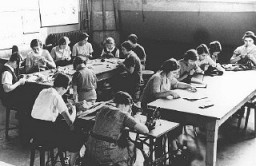
Graduates of the Piotrkow Trybunalski Hebrew Gymnasium (Jewish high school). Piotrkow Trybunalski, Poland, 1929.
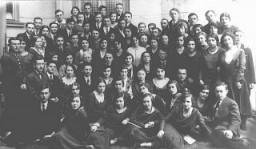
Blanka (middle row, third from right) graduates to become a pediatric nurse. December 1947.
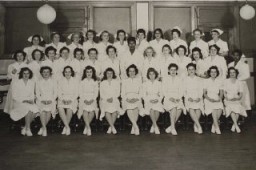
Siegfried Graetschus (right) and an unidentified man stand in front of Grafeneck, the first killing center established under Aktion T4 (the Nazi Euthanasia Program). Before joining the T4 program, Graetschus worked at the Sachsenhausen concentration camp. Photo dated early 1940.
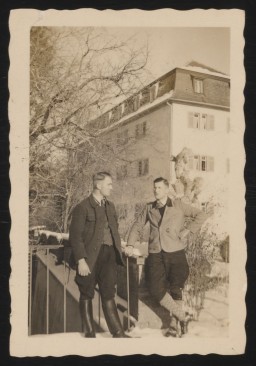
Windows of a Jewish-owned store painted with the word Jude (Jew). Berlin, Germany, June 19, 1938.

Blanka's granddaughter Alexis Danielle graduates from university in May 2000.

1991 photograph of Aron and Lisa's granddaughters, Courtney and Lindsay. The eldest, Courtney, graduated from Harvard Business School in 2004.
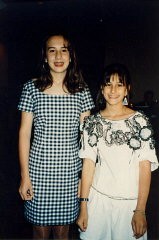
A Greek Jewish couple with compulsory yellow stars on their clothing. Salonika, Greece, between February and June 1943.
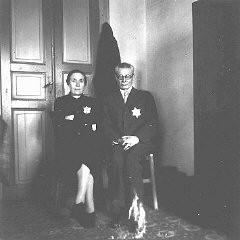
Greek Jews from the provinces move into a designated ghetto area, previously the Baron de Hirsch quarter. Jews were concentrated in this western quarter, near the railway station, in preparation for impending deportations. Salonika, Greece, between November 1942 and March 1943.
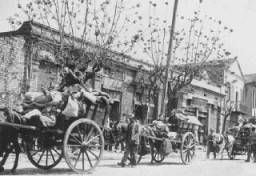
The commandant of Gross-Rosen, SS-Obersturmbannfuehrer Arthur Roedl, at his desk with a photograph of Adolf Hitler hanging on the wall. Gross-Rosen, Germany, 1941.
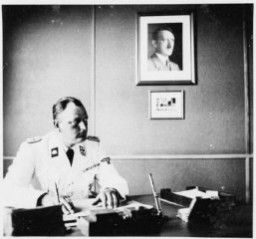
An SD officer reads a list of charges against a group of Polish civilians just before their execution in the forest near Szubin. A German soldier can be seen in the left background and a woman is included in the number of those to be shot. According to the Main Crimes Commission, one of the officers involved is SS Major Ernst Tiedemann. Szubin (Bydgoszcz), Poland, October 21, 1939.
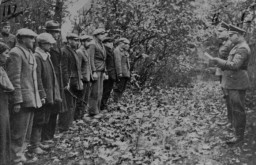
Group portrait of children and adults at the Hebrew school in the Gabersee displaced persons (DP) camp in Germany. Among those pictured is Bronia Spielman (front row, second from the left), circa 1946–1949.
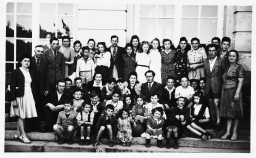
Jewish displaced persons (DPs) and American soldiers at the Heidenheim DP camp, circa 1946–1947. Leon Kliot (Klott) is standing on the far right, third from the top.

Prewar group portrait in front of a synagogue in the Transylvanian town of Sighet.
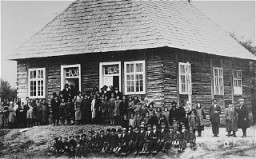
Group portrait at the Children's Aid Society (Oeuvre de Secours aux Enfants, OSE) home for Orthodox Jewish children in Ambloy, France. Among those pictured: Kalman Kalikstein (front left), Binem Wrzonski (middle right), and Elie Wiesel (back center). Photo dated 1945–1946.
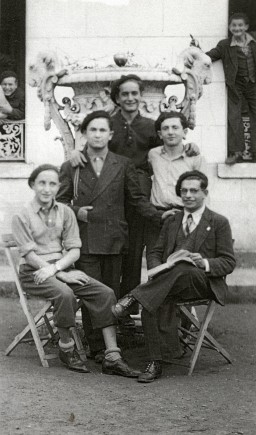
Group portrait of former Bielski partisans from Nowogrodek taken in the Foehrenwald displaced persons camp. Germany, April 3, 1948.
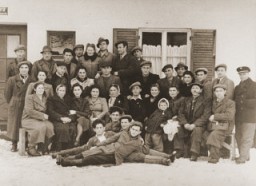
Group portrait of Jewish friends at a swimming pool in Kalocsa, Hungary, 1930.
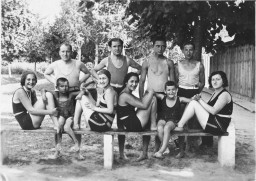
November 1938 group portrait of Jews of Polish nationality who were expelled from Nuremberg, Germany, to the Polish border town of Zbaszyn. The Jewish refugees were stranded on the border and were denied admission into Poland after their explusion from Germany.Pictured from left to right are: Leo Fallmann; Rosa Fallmann; Mr. Auerbach; Mr. Zahn; unknown; unknown; Chaim Kupfermann; Anni Kupfermann; Simon Wassermann; unknown; Regina Holzer; and Bertha Holzer.
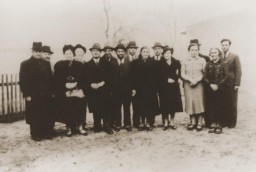
Group portrait of the members of the Zionist pioneer youth group, Ha-Shomer ha-Tsa'ir Hachshara. Kalisz, Poland, May 1, 1935.
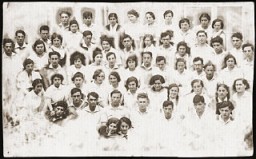
Young Jewish men and women pose for a photograph in the Piotrkow Trybunalski ghetto. Poland, 1940. Pictured from left to right are: Abram Zarnowiecki, Rozia Zarnowiecki, Mania Freiberger, Moniek, Rachel Zarnowiecki, and Chaim Zarnowiecki. All those pictured died in the Holocaust.
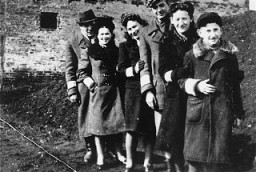
Group portrait of students at the Beis Yaakov religious school for girls dressed in costumes to celebrate the holiday of Purim. Kolbuszowa, Poland, March 1938.
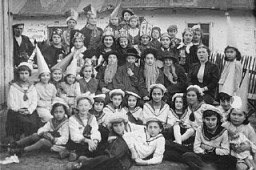
Hilda Rattner (born Hilda Wiener ) was born into a Jewish family in Vienna on June 14, 1904. Not long after her birth, Hilda’s parents realized that she was deaf. Two years later, their fourth child, Richard, was born, and he was also deaf. Vienna in particular had a very vibrant deaf community where Jews and non-Jews mixed freely. Hilda and her brother Richard attended a Jewish school, where they learned to sign, and it was through these associations and activities that Hilda met Isadore Rattner, a…
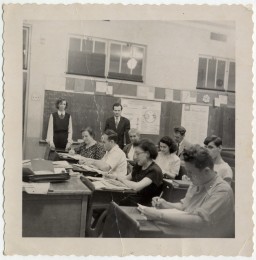
Group portrait of women and children standing outside in Warsaw before the war. Warsaw, Poland, ca. 1938.
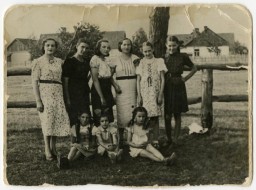
SS guards and Lithuanian collaborators force Jewish men into the Ponary forest, a site for mass killings outside of Vilna. German-occupied Lithuania, 1941.
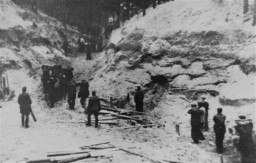
View of a guard tower and fence at the Buchenwald concentration camp. Germany, wartime.

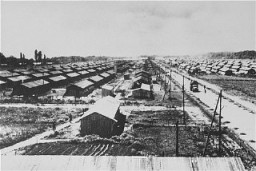
Gustav Schroeder, captain of the St. Louis, on the day of the ship's departure from Hamburg. Neither Cuba nor the US granted refuge to the ship's passengers. Germany, May 13, 1939.
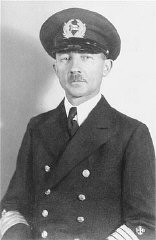
"Gypsy camp" area in the Lodz ghetto. Roma (Gypsies) were confined in a segregated block of buildings. Poland, 1941–44.
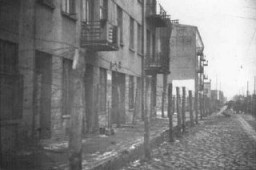
Smoke rising from the chimney at Hadamar, one of six facilities which carried out the Nazis' Euthanasia Program. Hadamar, Germany, probably 1941. [Dioezesanarchiv Limburg (DAL), Papers of Father Hans Becker]
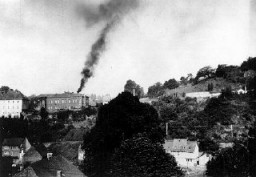
Haika Grosman, one of the organizers of the Bialystok ghetto underground and participant in the Bialystok ghetto revolt. Poland, 1945.

Hair of women prisoners, prepared for shipment to Germany, found at the liberation of Auschwitz. Poland, 1945.
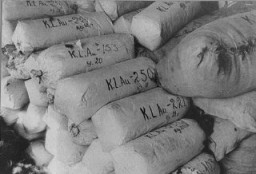
During World War II, the Nazi regime financed and facilitated anti-British and antisemitic broadcasts by the former Mufti of Jerusalem, Hajj Amin al-Husayni, an Arab nationalist and prominent Muslim religious leader, to mobilize support for Germany and the Axis among Muslims in the Balkans and the Middle East. At the close of the war, al-Husayni was arrested in the French occupation zone of Germany. After authorities moved him to France, al-Husayni fled to Egypt, where he continued to produce and…
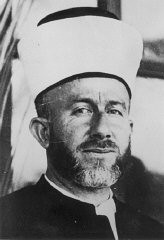
The former Mufti of Jerusalem, Hajj Amin al-Husayni, meets Hitler for the first time. Berlin, Germany, November 28, 1941.
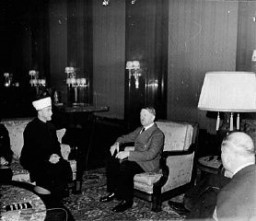
Hajj Amin al-Husayni in the company of German SS and Bosnian members of the Waffen-SS during an official visit to Bosnia, ca. 1943.
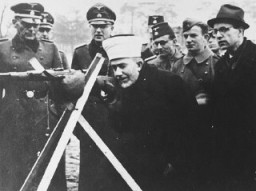
Halina Bryks was photographed in the Kloster Indersdorf children's center in an attempt to help locate surviving relatives. Photographs such as this one showing children holding name cards were published in newspapers to facilitate the reunification of families. Germany, after May 1945.
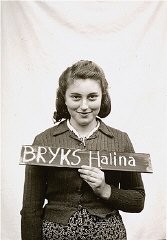
Visitors in the Hall of Witness at the United States Holocaust Memorial Museum. Washington, DC, 1998.

The public hanging of three members of the Communist underground on Karl Marx Street in Minsk. One of the victims wears a large placard around his neck that reads "We are partisans and have shot at German soldiers."This execution was one of four carried out in Minsk on October 26, 1941, by German troops with the 707th Infantry Division. Altogether, 12 members of the Communist underground were publicly hanged in four groups of three near a yeast-making factory. This is believed to be the first public…
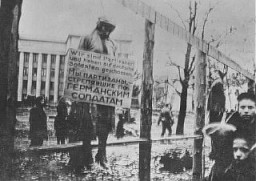
Members of the Lvov Jewish council are hanged by the Germans. Lvov, Poland, September 1942.
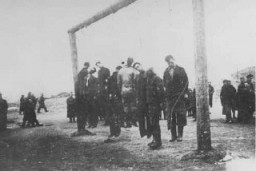
Jewish parachutist Hannah Szenes at Kibbutz Sedot Yam, a communal agricultural settlement. Palestine, 1941.
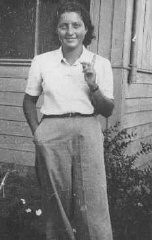
Hannah Szenes on her first day in Palestine. Haifa, Palestine, September 19, 1939. Between 1943 and 1945, a group of Jewish men and women from Palestine who had volunteered to join the British army parachuted into German-occupied Europe. Their mission was to organize resistance to the Germans and aid in the rescue of Allied personnel. Hannah Szenes was among these volunteers. Szenes was captured in German-occupied Hungary and executed in Budapest on November 7, 1944, at the age of 23.
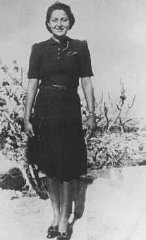
Jewish parachutist Hannah Szenes at Kibbutz Sedot Yam, a communal agricultural settlement. Palestine, 1942.
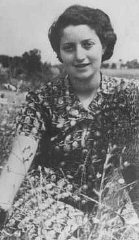
Hannah Szenes, in the garden of her Budapest home before she moved to Palestine and became a parachutist for rescue missions. Budapest, Hungary, before 1939.
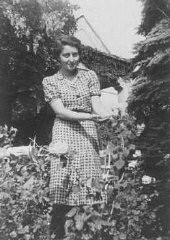
Defendant Hans Fritzsche enters the Nuremberg courtroom under American guard during the International Military Tribunal.
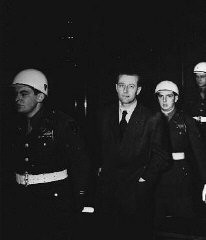
A Hanukkah party for Jewish children at the Fuerth displaced persons camp. Gifts were contributed by families of Americans stationed at the Nuremberg military post. Germany, December 9, 1947.
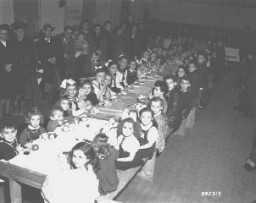
We would like to thank Crown Family Philanthropies, Abe and Ida Cooper Foundation, the Claims Conference, EVZ, and BMF for supporting the ongoing work to create content and resources for the Holocaust Encyclopedia. View the list of donor acknowledgement.